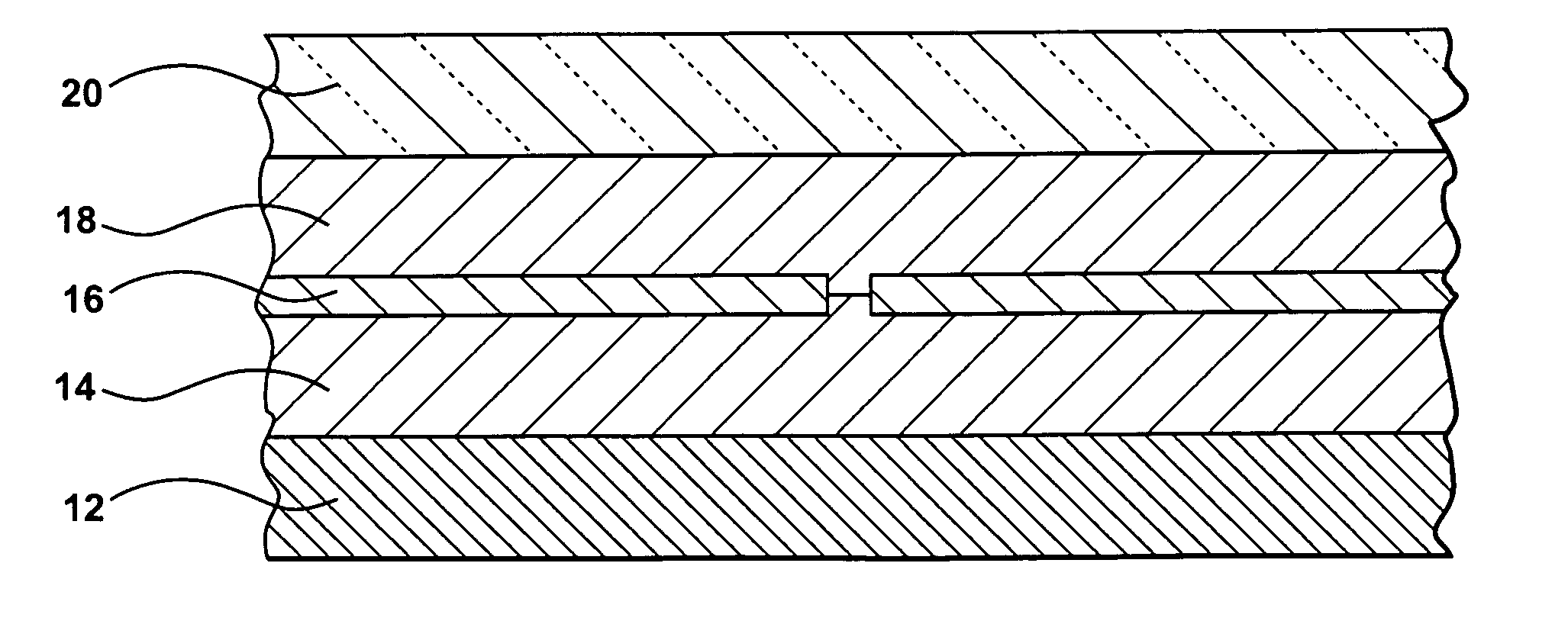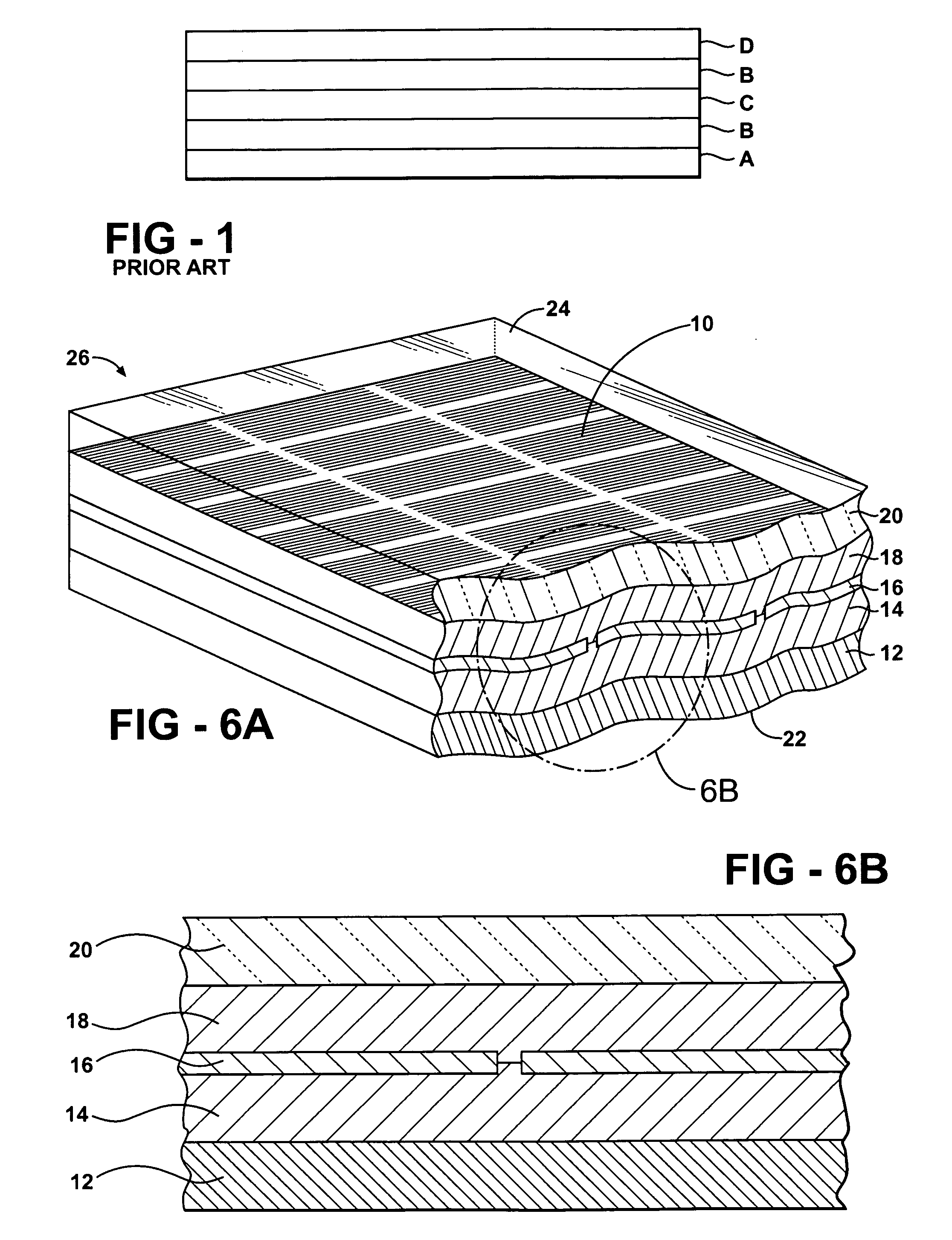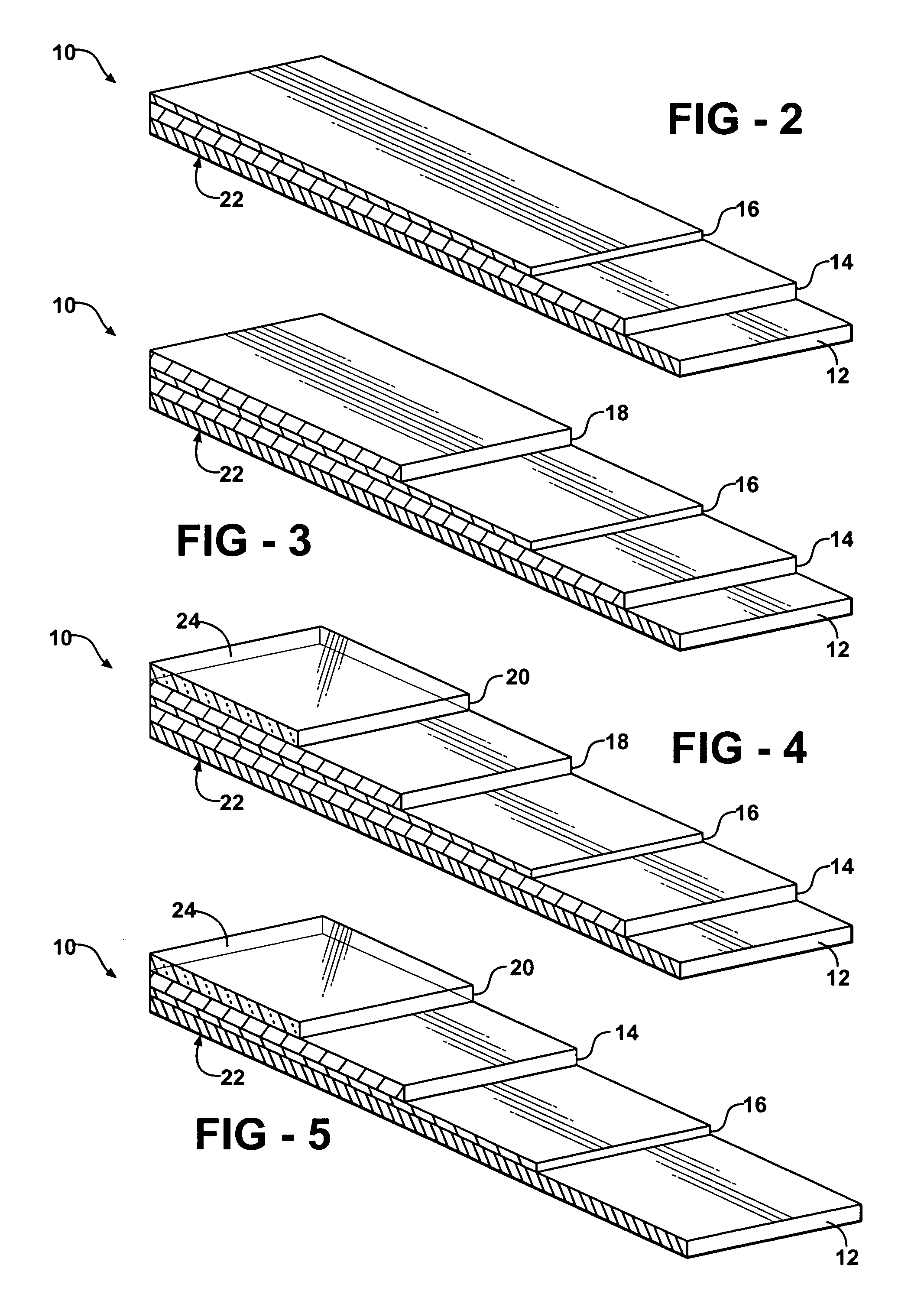Photovoltaic Cell Module And Method Of Forming Same
a photovoltaic cell and module technology, applied in the field of photovoltaic cell modules, can solve the problems of low uv resistance of eva, low efficiency of encapsulation methods known in the art, and ineffective encapsulation methods, so as to improve durability and weatherability, reduce cost, and improve the effect of photovoltaic cell module production
- Summary
- Abstract
- Description
- Claims
- Application Information
AI Technical Summary
Benefits of technology
Problems solved by technology
Method used
Image
Examples
examples
[0120]Two tie layers (Layers 1 and 2) are formed according to the instant invention. In addition, two comparative tie layers (Comparative Layers 1 and 2) are also formed but not according to the instant invention. During and after formation, each of the Layers 1 and 2 and the Comparative Layers 1 and 2 are evaluated to determine viscosity, Shore 00 durometer hardness, hardness, depth of penetration, and tack value. The formulations used to form Layers 1 and 2 and the Comparative Layers 1 and 2, in addition to the measurements of viscosity, Shore 00 durometer hardness, hardness, depth of penetration, and tack value are set forth in Table 1 below wherein all parts are in parts by weight, unless otherwise indicated.
TABLE 1ComparativeComparativeLayer 1Layer 2Layer 1Layer 2FormulationPolymer 198.9848.8135.180.49Polymer 2—41.87——Polymer 3———11.04Polymer 4—4.06—7.73Polymer 50.90.131.440.49Polymer 6—5.38——Cure0.040.010.190.17InhibitorCatalyst 10.08—0.09—Catalyst 2—0.14—0.08Filler——55.38—Pig...
PUM
| Property | Measurement | Unit |
|---|---|---|
| depth of penetration | aaaaa | aaaaa |
| thickness | aaaaa | aaaaa |
| thickness | aaaaa | aaaaa |
Abstract
Description
Claims
Application Information
 Login to View More
Login to View More - R&D
- Intellectual Property
- Life Sciences
- Materials
- Tech Scout
- Unparalleled Data Quality
- Higher Quality Content
- 60% Fewer Hallucinations
Browse by: Latest US Patents, China's latest patents, Technical Efficacy Thesaurus, Application Domain, Technology Topic, Popular Technical Reports.
© 2025 PatSnap. All rights reserved.Legal|Privacy policy|Modern Slavery Act Transparency Statement|Sitemap|About US| Contact US: help@patsnap.com



